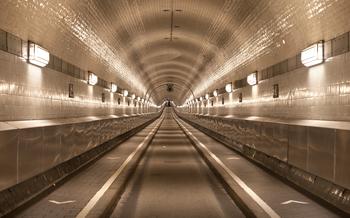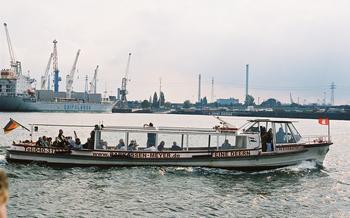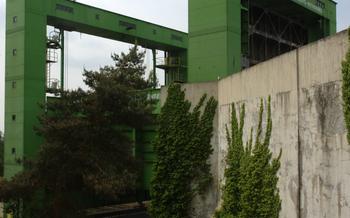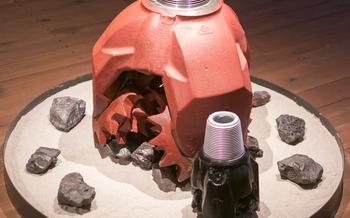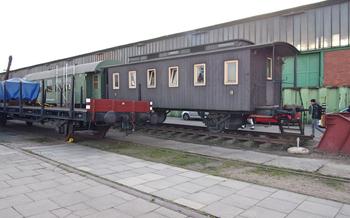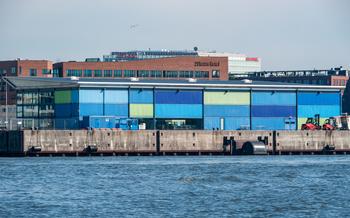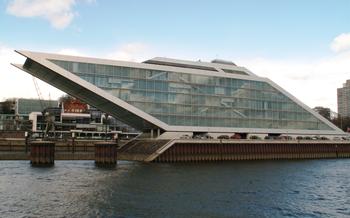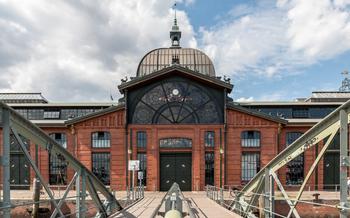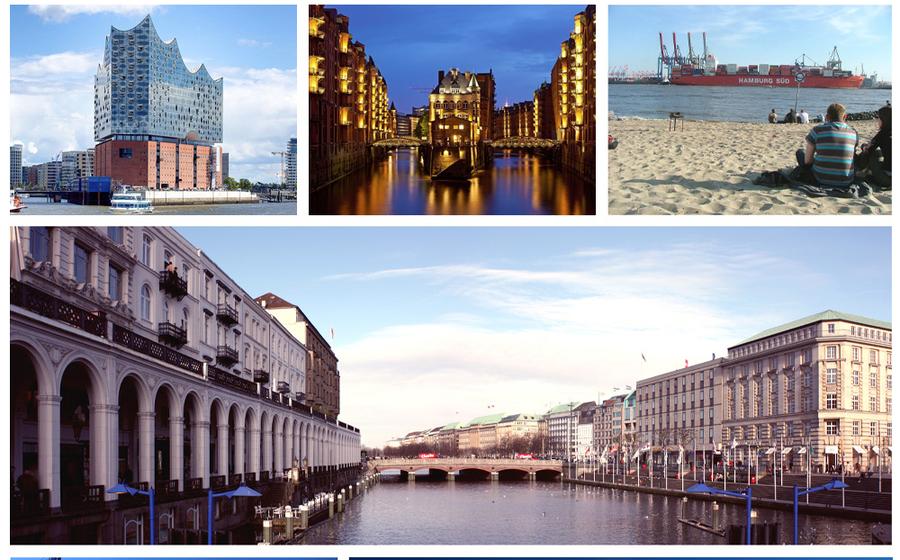
Ballinstadt Port of Dreams
- The Ballinstadt: A Gateway to the New World
- A Thriving Port City: Hamburg's Maritime History
- Preservation of a Unique Heritage: The Ballinstadt Today
- Exploring the Grounds: A Walk Through History
- The Great Hall: A Witness to Farewell and Hope
- Uncovering Personal Stories: The Emigration Museum
- A Journey of Hope and Hardship: The Emigrant Experience
- In Search of a New Beginning: Destination America
- Leaving a Legacy: The Impact of Emigration on Germany
- The Port of Dreams: A Symbol of Opportunity and Change
- Paying Homage: The Emigrant Memorial
- Interactive Exhibitions: Engaging with History
- Guided Tours: Unveiling Hidden Stories
- Historical Workshops: Experiential Learning
- Insider Tip: Capture the Moment
The Ballinstadt: A Gateway to the New World
In the heart of Hamburg, Germany, lies the Ballinstadt, a historical site that once served as a gateway to the Americas for millions of European emigrants. This port of dreams, as it was known, played a pivotal role in the mass emigration movement of the 19th and early 20th centuries. Established in 1850, the Ballinstadt was strategically located near the Elbe River, providing a convenient departure point for ships bound for the United States and other destinations. Its proximity to Hamburg, a major port city with a vibrant maritime history, further contributed to its significance as a hub for emigration.
A Thriving Port City: Hamburg's Maritime History
Hamburg's maritime heritage is deeply intertwined with the Ballinstadt. The city's strategic location on the Elbe River, connecting it to the North Sea, has played a crucial role in its development as a major port city. Throughout history, Hamburg has been a hub for trade and commerce, with ships carrying goods from all corners of the world.
The port's success brought prosperity to Hamburg, transforming it into one of the wealthiest and most influential cities in Europe. The city's merchants and shipbuilders played a significant role in shaping the maritime industry, contributing to advancements in shipbuilding technology and navigation.
Moreover, Hamburg's role as a port city had a profound impact on its culture. The city embraced diversity and cosmopolitanism, welcoming people from different backgrounds and cultures. This vibrant mix of influences shaped Hamburg's unique identity, making it a melting pot of ideas and traditions.
Preservation of a Unique Heritage: The Ballinstadt Today
Recognizing the immense historical significance of the Ballinstadt, concerted efforts have been made to preserve and protect this unique site. The establishment of the Ballinstadt Emigration Museum serves as a testament to the commitment to safeguarding the memory and legacy of the millions who passed through these gates. The museum's primary goal is to raise awareness about the phenomenon of emigration and its profound impact on the lives of individuals, families, and communities. Through its exhibits, interactive displays, and educational programs, the museum sheds light on the challenges, hopes, and dreams of those who left their homeland in search of a better life abroad. The preservation and interpretation of the Ballinstadt site ensure that the stories of these courageous individuals continue to resonate with visitors, fostering a deeper understanding of the human experience and the enduring legacy of emigration.
Exploring the Grounds: A Walk Through History
A visit to the Ballinstadt offers a unique opportunity to explore the preserved grounds of the former emigration port. Highlights include the Great Hall, where emigrants gathered before boarding ships to their new lives; the Emigrant Museum, which houses exhibits and personal stories about the emigration experience; and the Emigrant Memorial, which honors the memory of those who left Germany in search of a better life.
Visitors can take a self-guided tour of the complex, following the footsteps of the emigrants who passed through here over a century ago. Points of interest include the original departure halls, where emigrants were processed and given medical examinations; the dormitories, where they slept in cramped conditions while awaiting their departure; and the baggage hall, where they stored their belongings before boarding the ships.
The preserved buildings offer a glimpse into the lives of the emigrants who left Germany in search of a better life. The Great Hall, with its high ceilings and stained-glass windows, was a place of both excitement and sadness as emigrants said goodbye to their loved ones and embarked on their journey to the unknown. The dormitories, with their simple beds and shared bathrooms, provide a sense of the cramped and unsanitary conditions in which the emigrants lived. And the baggage hall, with its piles of suitcases and trunks, reminds us of the material possessions that the emigrants brought with them as they left their homeland behind.
The Great Hall: A Witness to Farewell and Hope
The Great Hall, the centerpiece of the Ballinstadt complex, stands as a silent witness to the hopes and dreams of millions of emigrants who passed through its doors. Constructed in 1891, the hall served as a central processing and departure point for emigrants. Here, they underwent medical examinations, received travel documents, and bid farewell to their loved ones.
The hall's vast interior, with its high vaulted ceiling and rows of wooden benches, once echoed with the sounds of laughter, tears, and heartfelt goodbyes. For many emigrants, it was the last glimpse of their homeland before embarking on a long and uncertain journey across the Atlantic.
Today, the Great Hall stands as a solemn reminder of the millions who left their homeland in search of a better life. It serves as a poignant symbol of the human spirit's resilience and the enduring power of hope.
Uncovering Personal Stories: The Emigration Museum
The Ballinstadt Emigration Museum is a treasure trove of personal stories and experiences, providing visitors with a glimpse into the lives of those who left their homeland in search of a better future. Through a variety of exhibits, interactive displays, and multimedia presentations, the museum brings the past to life, revealing the hopes, dreams, and challenges faced by emigrants.
Exhibits showcase the belongings of emigrants, such as letters, diaries, and photographs, offering a tangible connection to their lives. Visitors can learn about the reasons why people chose to emigrate, the hardships they endured during their journey, and the challenges they faced in building a new life in a foreign land.
Interactive displays and multimedia presentations add a dynamic element to the museum experience, allowing visitors to immerse themselves in the emigrant experience. They can listen to audio recordings of emigrants recounting their stories, watch videos that recreate the conditions on ships and in transit camps, and even try their hand at writing a letter home to loved ones left behind.
The impact of these personal stories is profound. Visitors often leave the museum with a deeper understanding of the human toll of emigration and a newfound appreciation for the courage and resilience of those who made the difficult decision to leave everything behind in search of a better life.
A Journey of Hope and Hardship: The Emigrant Experience
The journey undertaken by emigrants from the Ballinstadt was fraught with challenges and hardships. Once aboard the ships bound for America, they faced cramped and unsanitary living conditions, with hundreds of people packed into tight quarters. Disease was rampant, and many succumbed to illness during the long voyage. The food provided was often meager and of poor quality, leading to malnutrition and hunger.
For many, the journey also involved a sense of loss and uncertainty. They were leaving behind their homeland, their families, and their way of life. The prospect of starting over in a foreign land, with an unknown language and culture, was daunting. Yet, they were driven by a burning desire for a better life and the hope of fulfilling their dreams in the New World.
In Search of a New Beginning: Destination America
The United States emerged as a beacon of hope and opportunity for countless emigrants seeking a better life. America's vast, undeveloped lands and promise of religious freedom, economic prosperity, and social mobility held immense allure for those seeking to escape poverty, persecution, or political oppression in their home countries.
The journey to America was often arduous and fraught with challenges. Emigrants endured cramped and unsanitary conditions on overcrowded ships, facing the risk of disease, malnutrition, and even death. Upon arrival in America, many emigrants found themselves in unfamiliar and often hostile environments, struggling to learn a new language, find employment, and establish themselves in a foreign land.
Despite these hardships, the hope of a better future sustained many emigrants throughout their journey. They dreamed of owning their own land, providing for their families, and achieving a level of success that would have been impossible in their home countries. The stories of those who succeeded in America inspired countless others to embark on the same journey, fueled by the belief that America was truly a land of opportunity.
Leaving a Legacy: The Impact of Emigration on Germany
The mass emigration from Germany had a profound impact on the country's economy, society, and culture. The departure of millions of skilled workers, intellectuals, and entrepreneurs left a noticeable void in various sectors, leading to labor shortages and a decline in economic productivity. Moreover, the loss of these individuals weakened Germany's intellectual and cultural landscape, as many of them were artists, writers, and academics who contributed to the nation's cultural heritage.
The impact of emigration extended beyond the economic and cultural spheres. It also had a significant influence on Germany's national identity. The departure of so many people, particularly during periods of political and economic turmoil, led to a sense of loss and a questioning of the country's identity and direction. This process of self-reflection and redefinition continues to shape Germany's national narrative and discourse.
In conclusion, emigration from Germany in the 19th and early 20th centuries was a complex phenomenon with far-reaching consequences. It not only affected the lives of those who left, but also left an indelible mark on the country they left behind. Understanding the impact of emigration is crucial for comprehending Germany's history, society, and culture.
The Port of Dreams: A Symbol of Opportunity and Change
The Ballinstadt stands as a profound symbol of hope and opportunity, embodying the dreams and aspirations of millions of people who left their homeland in search of a better life. It represents a pivotal chapter in history, where individuals from diverse backgrounds embarked on a journey to forge new destinies in foreign lands. The port's legacy extends far beyond the borders of Germany, serving as a reminder of the global impact of emigration and its transformative power to shape the modern world.
The Ballinstadt played a pivotal role in shaping the cultural and social fabric of the United States, as well as other countries that received large numbers of emigrants. The influx of new ideas, skills, and perspectives from these newcomers enriched and transformed their adopted nations. The port's enduring legacy is evident in the contributions made by descendants of emigrants in various fields, from politics and business to arts and culture.
Standing as a testament to human resilience and the pursuit of a better future, the Ballinstadt serves as a poignant reminder of the profound impact emigration has had on the course of history. Its story continues to inspire generations and serves as a reminder of the enduring power of hope and the pursuit of a better life.
Paying Homage: The Emigrant Memorial
Amidst the historical buildings and poignant stories of the Ballinstadt, the Emigrant Memorial stands as a solemn tribute to those who left their homeland in search of a better life. Erected in 1985, this memorial serves as a reminder of the millions of emigrants who passed through the port, filled with hopes and dreams for the future.
The memorial consists of a series of bronze sculptures, each representing a different aspect of the emigrant experience. One sculpture portrays a family huddled together, their expressions etched with uncertainty and longing. Another depicts a young woman gazing out into the distance, her eyes filled with both trepidation and anticipation. These sculptures capture the emotional turmoil and profound sense of change that accompanied the decision to leave everything behind and embark on an unknown journey.
The Emigrant Memorial not only honors the memory of those who left Germany but also serves as a reminder of the significant role that emigration played in shaping the nation's history and identity. It is a place of reflection and remembrance, where visitors can pay homage to the courage and determination of those who dared to dream of a new beginning.
Interactive Exhibitions: Engaging with History
The Ballinstadt Emigration Museum goes beyond traditional displays by offering interactive exhibitions that immerse visitors in the emigrant experience. Touchscreens and multimedia presentations bring to life the stories of individuals who passed through the port, allowing visitors to connect with their struggles and aspirations. Interactive maps trace the routes taken by emigrants, showcasing their diverse origins and destinations.
Hands-on activities provide a tangible connection to the past. Visitors can stamp their own passports with replicas of historical stamps, handle replicas of artifacts carried by emigrants, and even try their hand at writing with a quill and ink. These interactive elements transform the museum into a vibrant learning environment, encouraging visitors to actively engage with the history they are exploring.
Guided Tours: Unveiling Hidden Stories
Enhance your visit to the Ballinstadt Emigration Museum with a guided tour, an enriching experience that offers a deeper understanding of the site's history and significance. Knowledgeable guides, passionate about the museum's mission, lead visitors through the various exhibits, providing insights into the lives of the emigrants who passed through these halls.
Guided tours unveil hidden stories and forgotten details, bringing the past to life. Listen to tales of courage, hope, and hardship as you explore the preserved buildings and artifacts. Learn about the challenges faced by emigrants during their journey, the emotions they experienced as they bid farewell to their homeland, and their dreams for a better life in a new land.
By joining a guided tour, you'll gain a unique perspective on the Ballinstadt and its role in the history of emigration. Engage with the museum's collection through the eyes of experts, and leave with a profound appreciation for the stories of those who dared to chase their dreams across the ocean.
Historical Workshops: Experiential Learning
The Ballinstadt Emigration Museum offers a range of educational workshops and programs that provide visitors with an immersive and hands-on learning experience. These workshops allow participants to delve deeper into the history of emigration and gain a firsthand understanding of the challenges and hopes of those who passed through the port.
One popular workshop is "Life on the Ship," where participants simulate the experience of being an emigrant on a transatlantic voyage. They learn about the cramped living conditions, the food, and the entertainment available on board. Another workshop, "Crossing Borders," focuses on the challenges emigrants faced when arriving in a new country, such as learning a new language, finding a job, and adapting to a different culture.
Through these interactive workshops, visitors gain a deeper appreciation for the struggles and triumphs of the millions of emigrants who passed through Ballinstadt. They come away with a better understanding of the factors that drove people to leave their home countries and the hopes and dreams they carried with them as they embarked on their journeys to a new life.
Insider Tip: Capture the Moment
Documenting your visit to the Ballinstadt through photography is a wonderful way to preserve memories and share the unique atmosphere of this historic site. For the best results, consider these insider tips:
-
Seek Natural Lighting: The natural light in the Ballinstadt complex creates a beautiful and soft glow. Take advantage of this by visiting during the golden hours of sunrise or sunset, when the light is at its most flattering.
-
Explore Different Perspectives: Don't just stick to the obvious angles. Experiment with different perspectives by shooting from low or high vantage points, or by using reflections to create interesting compositions.
-
Capture the Details: Pay attention to the small details that make the Ballinstadt special. Photograph the intricate carvings on the buildings, the old luggage and artifacts in the museum, and the expressions on the faces of the sculptures in the Emigrant Memorial.
-
Tell a Story: Your photos should tell a story about your experience at the Ballinstadt. Capture the emotions of the exhibits, the beauty of the architecture, and the spirit of hope that permeates the site.
-
Share Your Memories: Once you've captured your memories, share them with others! Post your photos on social media, create a travel blog, or print them out to create a lasting keepsake.

